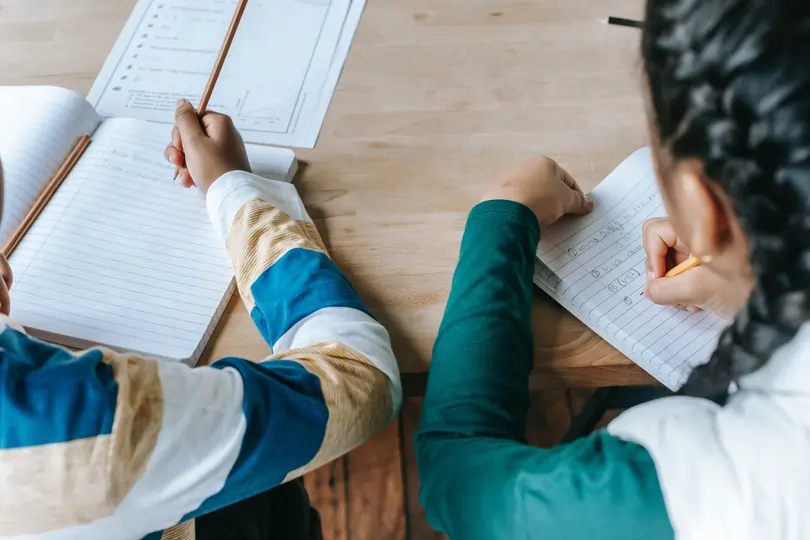Model Drawing 1
In this article, we will learn about Model Drawing:
- Part-Whole Models - 2 step
Recap question
Question 1:
There were 150 girls and 208 boys at a carnival. How many children were there altogether?
- 58
- 352
- 358
- 385
Solution:
We can draw a bar model to represent the numbers in a question. A longer bar represents a greater value while a shorter bar represents a smaller value. In this question, the bar representing the number of boys will be longer while the bar representing the number of girls will be shorter.
\(150 + 208 = 358\)
Answer:
(3) 358
Question 2:
A fruit seller has a total of 295 apples. 104 of the apples are green while the rest of the apples are red. How many red apples does he have?
- 111
- 191
- 199
- 399
Solution:
\(295 - 104 = 191\)
Answer:
(2) 191
1. Part-Whole Models - 2 Step
2-step problems are problems that require 2 operations to solve them. We can draw a bar model to represent each operation or a combined bar model to represent both operations to help us.
They can include two additions, two subtractions or a mix of both.
Example 1:
At a bookshop, there are 80 red pens, 134 blue pens and 67 green pens. How many red and blue pens are there?
Solution:
\(80 + 134 = 214\)
Answer:
214 pens
Example 2:
At a bookshop, there are 80 red pens, 134 blue pens and 67 green pens. How many pens are there altogether?
Solution:
Add the number of red, blue and green pens to find the number of pens altogether.
\(214 + 67 = 281\)
Answer:
281 pens
Question 1:
At a football match, there are 430 adults, 126 girls and 225 boys. How many people are there at the football match altogether?
- 351
- 556
- 771
- 781
Solution:
This model has 3 parts: adults, girls and boys. The adults will have the longest bar, followed by the boys, then the girls.
\(\begin{align} 430 + 126 &= 556 \\[2ex] 556 + 225 &= 781 \end{align}\)
Answer:
(4) 781
Question 2:
There were 474 pages in a storybook. Gina read 124 pages on Saturday and 150 pages on Sunday.
- How many pages did she read on both days together?
Solution:
\(124 + 150 = 274\)
Answer:
274
- How many pages of the storybook were left unread?
Solution:
\(474 - 274 = 200\)
Answer:
200
OR
Alternatively, we can also subtract the total number of pages read on Saturday and Sunday from the total number pages as follows:
\(\begin{align} 474 - 124 &= 350 \\[2ex] 350 - 150 &= 200 \end{align}\)
Answer:
200
Question 3:
Choose the correct model that best represents the following:
There were overall 380 red beads, yellow beads and blue beads in a bag. 120 beads were red and 180 beads were yellow. How many beads were blue?
Answer:
(1)
Question 4:
Jerald had 160 stamps in his album. He gave 40 stamps to his sister and 35 stamps to his friend.
- How many stamps did he give away altogether?
- 5
- 15
- 75
- 85
Solution:
\(40 + 35 = 75\)
Answer:
(3) 75
- How many stamps was Jerald left with?
- 85
- 95
- 115
- 235
Solution:
\(160 - 75 = 85 \)
Answer:
(1) 85
Question 5:
There are 800 people at a stadium. 242 of them are boys and 136 of them are girls. The rest of them are adults. How many adults are there?
- 378
- 422
- 432
- 532
Solution:
\(\begin{align} 242 + 136 &= 378 \\[2ex] 800 - 378 &= 422 \end{align}\)
Answer:
(2) 422
Challenge yourself!
Question 1:
There were 105 jelly beans in a jar. Afiq took out 23 jelly beans to give to his brother. He then bought another 45 jelly beans and put them in the jar.
- How many jelly beans were left in the jar after Afiq gave 23 jelly beans to his brother?
- 22
- 72
- 82
- 128
Solution:
\(105 - 23 = 82\)
Answer:
(3) 82
- How many jelly beans were left in the jar in the end?
- 37
- 123
- 127
- 150
Solution:
\(82 + 45 = 127\)
Answer:
(3) 127
In this article, we learned about Model Drawing:
Part-Whole Models (2 step)
- 2-step problems are problems that require 2 operations to solve them.
- We can draw a bar model to represent each operation or a combined bar model to represent both operations to help us.
 SG
SG  VN
VN 












